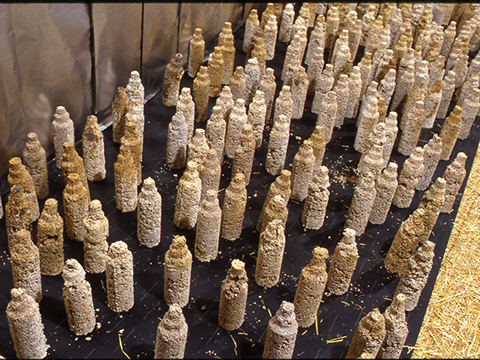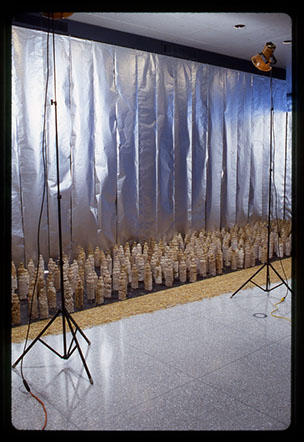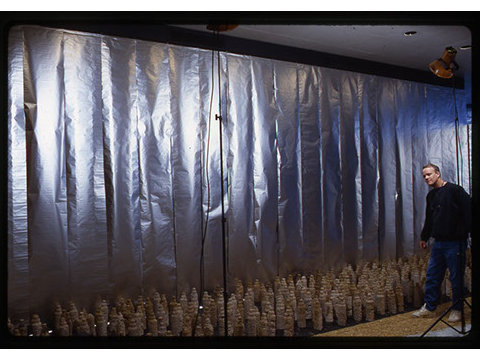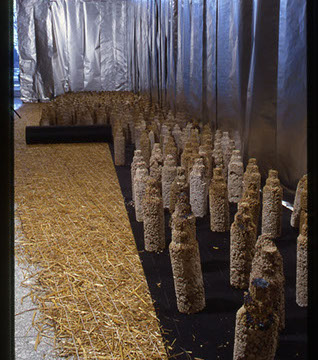600 ACRES




600 ACRES
600 ACRES
600 ACRES
600 ACRES
1 - 4
<<
>>
In the mid-nineties a controversy arose over land use in Kalamazoo.
The university wanted to sell its Lee Baker Farm property, which bordered on residential neighborhoods, for developers to build an industrial park. Like many others, I felt that it should be left as green space, a rapidly dwindling asset for the community.
In protest, I made an installation of six hundred castable-refractory bottle forms marching down a fifty-foot length of erosion matting, partially covering tar paper. Aluminum foil, dull side out, hung in strips behind, helped to deaden an already lifeless environment.
The piece titled 600 Acres was exhibited at the Kalamazoo Institute of Arts.
A few months passed and I realized my installation visually resembled a temple garden in Kyoto, Japan called the Garden of 10,000 Buddhas, which I had visited several years earlier. In this garden covering many hilly acres were hundreds and hundreds of stones tightly but organically arranged with pathways between, not manicured, constructed apparently over hundreds of years since the Momoyama Period. It was a thrilling discovery in the hills outside Kyoto and a struggle to find. I walked for a good hour not knowing for sure I was on the right road to reach it.
I wasn’t thinking about this extraordinary garden when I made my installation piece. Rather, it sprang up from my subconscious.
A half-decade later this farm property became home to the university’s new engineering campus and several dozen small factory buildings—the road to “progress” and profit defining the reigning Zeitgeist.